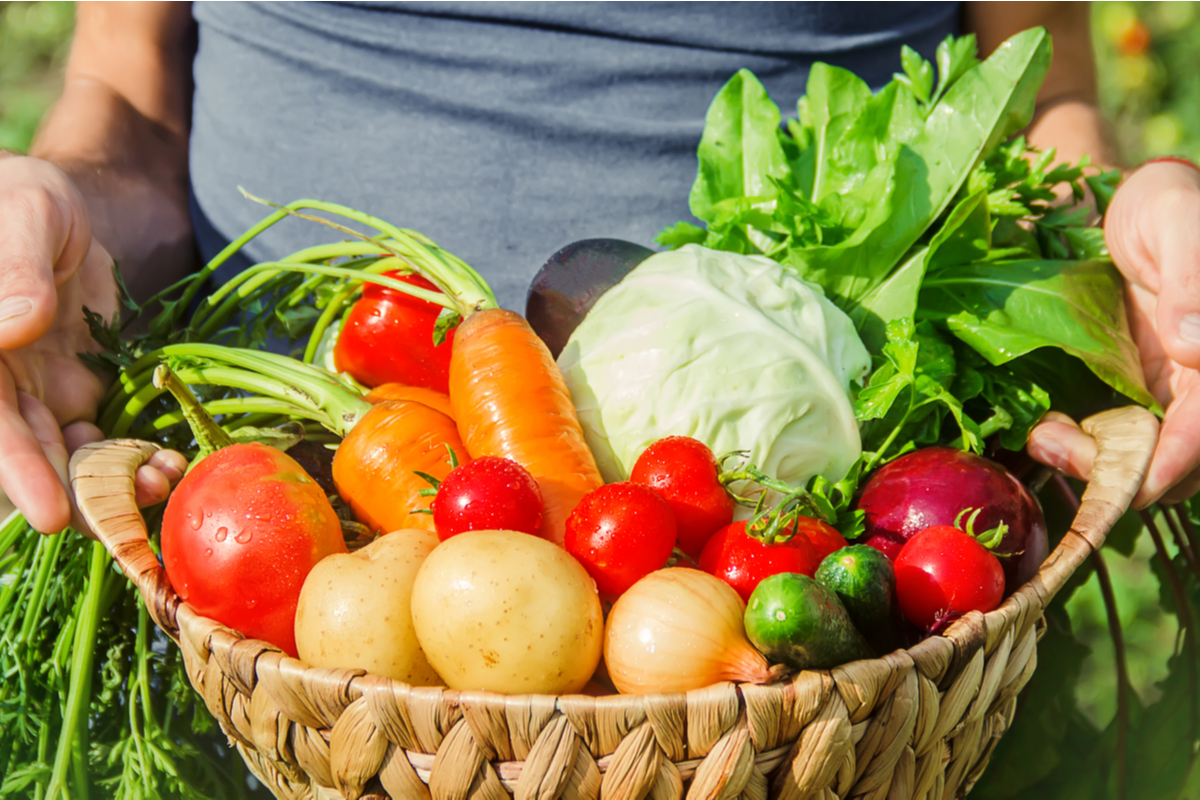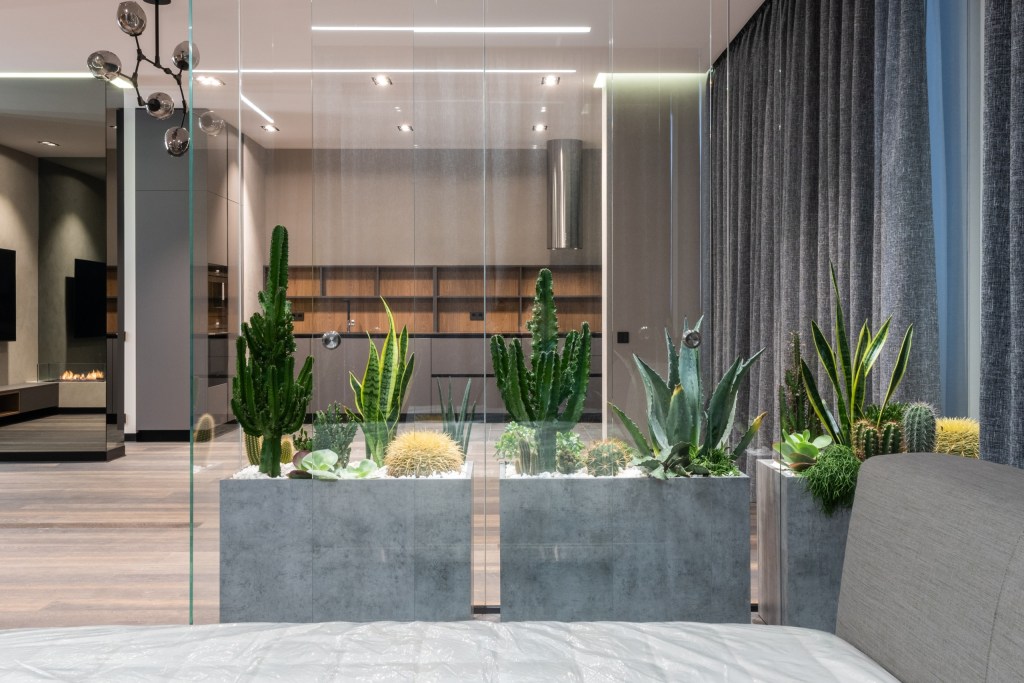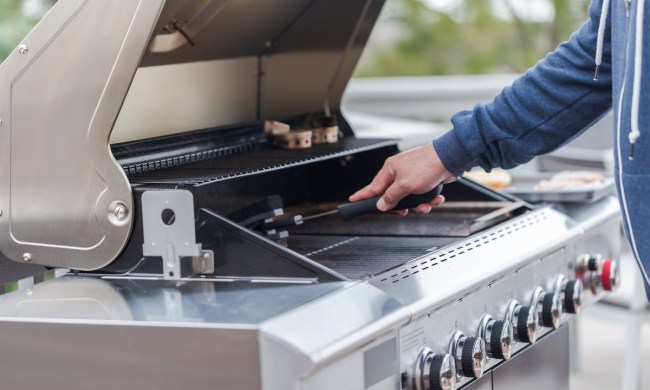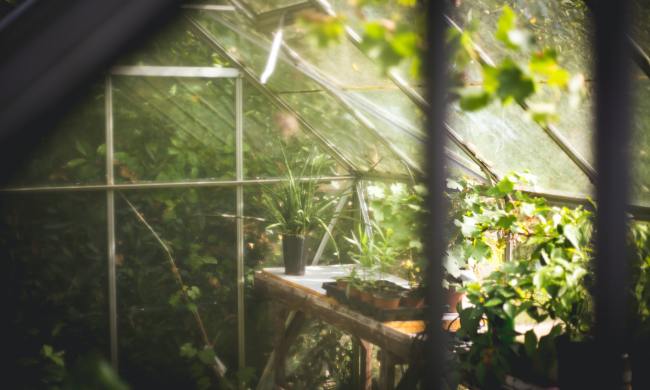When people think of greenhouses, huge buildings with hundreds of plants inside comes to mind. However, in actuality, greenhouses come in all shapes and sizes. It may seem almost impossible to create a greenhouse for a tight space, such as an apartment or home with no backyard, but greenhouses can range in size from a 1×1-foot box to a huge 26×12-foot monster. It all depends on your space and what you want to grow.
Anyone can create a DIY indoor greenhouse with proper planning and foresight. Do not let having a small space deter you from growing your own fruits and veggies right inside your home. There are greenhouses in every size, even ones that fit right on a windowsill. Let us break down what size is best for an inside space.

Best plants to grow inside
The first decision to make is what plants you want to grow inside your greenhouse. Some fruits and veggies take up more space than others and will determine the space needed. For herbs, we recommend hardier options, such as thyme, rosemary, and sage. Basil, parsley, and cilantro will also grow well indoors. Veggies are a little trickier because they can take up a decent amount of space, but our recommendations include hot peppers, tomatoes, spinach, and radishes. Fruits are some of the easiest options because most are small and grow quickly indoors for a healthy snack all year long; we recommend grapes, strawberries, and gooseberries.
If you’re looking for flowers rather than edible options, there are a multitude of flowers that will thrive in an indoor greenhouse. If you have enough space, you can grow beautiful varieties, such as peace lilies, hostas, marigolds, and chrysanthemums.

Determining the size of your greenhouse
Now that you have chosen which plants you want to grow, you can move forward with selecting the size. This can depend on many factors, including the plants, but also the limits of your indoor space and the location of your greenhouse, e.g. close to a window for sunlight. If you’re simply growing a few herbs and maybe some stalks of cherry tomatoes, then you’re in luck because a simple 5×5-inch growing tray will be enough. However, if you are looking to grow bigger plants, such as small trees like avocados, then you will need to take their size into account.
Pro tip: Go vertical! Five-foot tall, vertical greenhouses work wonders for small spaces because you get the height needed without encroaching on the rest of your home. These are multi-tiered options that allow you to grow a lot of plants at once while saving space.
Environmental factors
Unlike a sprawling outdoor greenhouse, the indoor versions may need a little more help. There a number of things you should keep in mind when selecting the location of your indoor greenhouse.
Sunlight or grow lights
Obviously, sunlight is one of the most important parts about growing plants. Put your greenhouse somewhere that gets the most sunlight throughout the day. Natural light is best, but you can use grow lights to help if you live in a cloudy area or do not have a lot of windows. Just be aware that some grow lights can produce a lot of heat so set a timer before your plants wilt.
Temperature
In general, growing plants need to be in a space with a temperature between 65° to 75° F. Your home may fall in that range, but it is a wise investment to have an easy option control the temperature. For heat, a tea light or small electric heater can work wonders, while a small fan can lower the temperature fairly quickly. The nighttime temperatures should be 10 to 15 degrees cooler than the daytime temperatures so keep that in mind before you head to bed.
Humidity
The humidity of a home is a little harder to control, especially when summer hits. Even if your indoor plants are protected from the hot temperatures, they still can “feel’ how it is outside. Keep an eye on your plants’ leaves and stems; if either are turning brown, your plants probably need more moisture due to low humidity. Either get a humidifier for the space or mist the plants at least once a day.
Indoor greenhouses are not impossible to make and can work wonders for anyone living in a small space. If you’re looking to grow a few small herbs, your greenhouse can be as simple as growing trays inside of a box with a small heater. Choose the best space to get the plants proper sunlight, temperature, and humidity, and if you need a bigger greenhouse because you want to go all out, check out the vertical greenhouses. There are many options so you won’t have any excuses not to start growing your own indoor plants.


